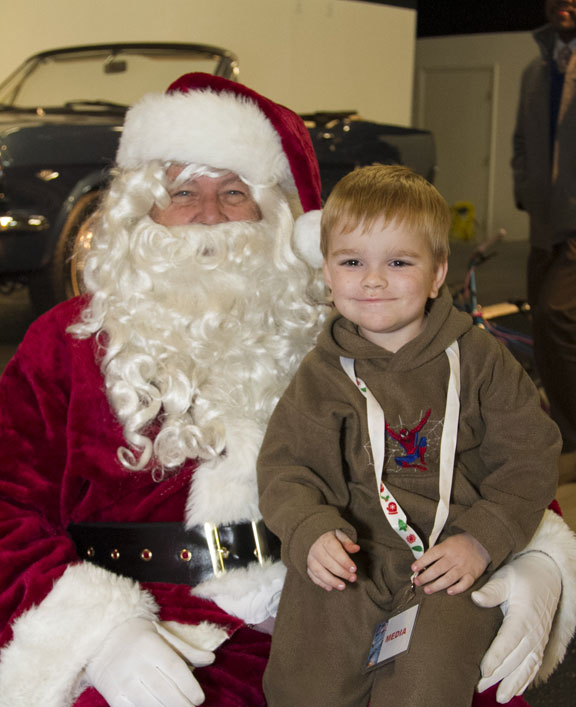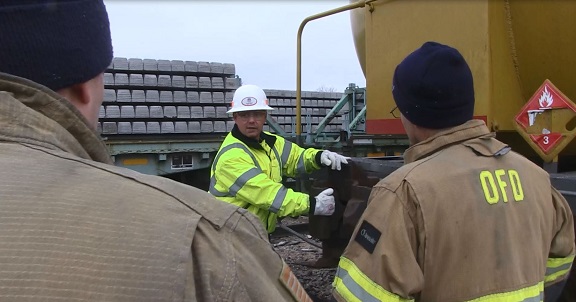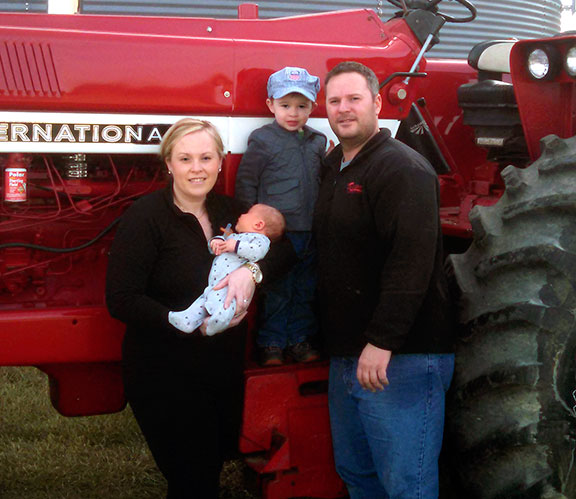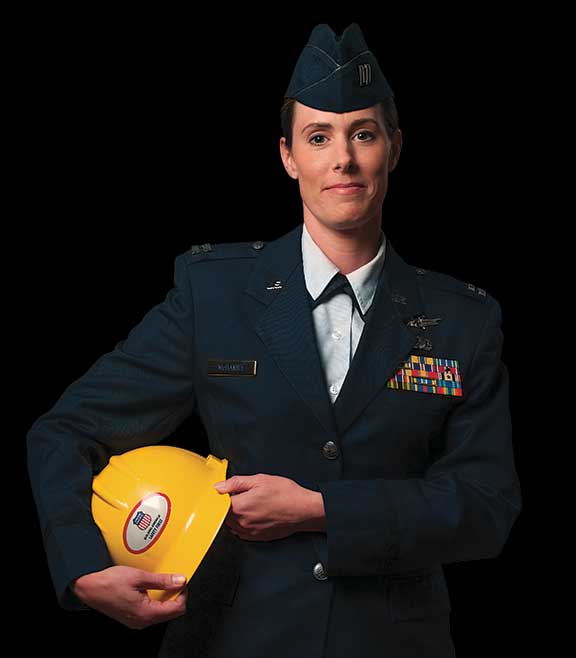Inside Track
Emergency Vehicles Delivered Home After Sandy
Posted March 18, 2013 10:30 AM CDT
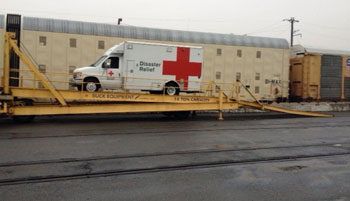
Saving an emergency response vehicle from miles of wear and tear, UP transports it from Hurricane Sandy relief efforts to its home American Red Cross chapter.
Dozens of Red Cross emergency response vehicles used in Hurricane Sandy recovery were returned to their native locations, thanks to Union Pacific. Unilevel rail cars loaded with the mobile feeding vehicles arrived at UP automotive ramps beginning Dec. 21, 2012, destined for their home American Red Cross chapters in the western United States.
Through a collaborative effort between UP, BNSF, CSX and NS, UP will move 45 of the vehicles, allowing the American Red Cross to direct resources toward its core focus of emergency recovery and support. Moving these 45 emergency response vehicles via rail saved 31 American Red Cross chapters more than 114,000 miles and 1,800 hours of driving time, plus gas, expenses and wear and tear to the vehicles.
"The UP team was particularly generous to donate both the rail transportation component and also the tracking visibility. Knowing where the vehicles were at all times was a huge benefit to our chapters."
– Michael Windle, American Red Cross senior associate for in-kind donations
The idea to move the vehicles via rail came from the American Red Cross' national headquarters and was directed to Class 1 railroads at a November association meeting. UP and other railroads quickly committed to providing their services.
"Being unfamiliar with rail transportation, the American Red Cross was unsure what to expect when it approached us about the possibility of supporting this request," said Lance Fritz, executive vice president-Operations. "The initial request was to transport the vehicles to within 250 miles of their home chapter, and we were able to exceed this by delivering them to within 150 miles."
A cross-functional UP team of a dozen employees worked to coordinate the logistics, tracking, and communication and coordination with the American Red Cross and successfully initiated the first shipment in less than a month's time.
"I am proud to work for a company that is both able and willing to provide assistance to the American Red Cross," said Mike Matya, Team Leader-NCSC, and project lead for the initiative. "It was all possible because of a committed and diverse team going above and beyond to provide a high level of service to the American Red Cross."
UP automotive ramps receiving Red Cross feeding vehicles include Benicia, Calif.; Las Vegas; Mira Loma, Calif.; Phoenix; Portland; Rolla, Colo.; and Roper, Utah. In addition to UP providing rail transportation for the shipments, Union Pacific Distribution Services (UPDS) provided visibility of all rail cars carrying the Red Cross emergency response vehicles through Shipment Management program. This allowed individual American Red Cross chapters to track their vehicles at every stage of the shipment, whether they were moved by UP or another railroad.
"The UP team was particularly generous to donate both the rail transportation component and also the tracking visibility," said Michael Windle, American Red Cross senior associate for in-kind donations. "Knowing where the vehicles were at all times was a huge benefit to our chapters and eliminated the need for dozens of daily email updates between our national and local offices."


